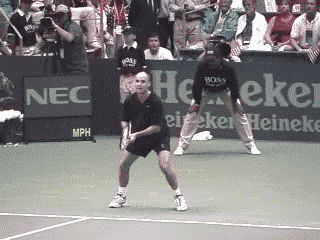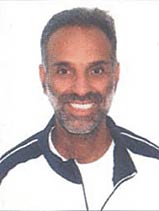|
TennisOne Lessons Breathing Happy Bhalla In tennis as in life, it seems everyone is looking for that quick-fix - the one tip that will right the ship and make everything work. But be wary of any quick-fixes in general and especially so in regard to mental awareness techniques on the court. The mind is a complex phenomenon that cannot change quickly or easily. Quick-fixes cater to our generation’s instant gratification needs, but ultimately will not get the job done. However the journey to eliminate tension is an on-going process that will deepen as the individual’s awareness increases. Meanwhile, however, there are things we can do on the court that will support this process. One of them is centered around our breathing. Breathing, for thousands of years has been central to many meditation techniques for two specific reasons that I am aware of. One is that breathing is always present; it is an unconscious act, which remains pretty constant. We can never forget to breathe! Secondly, breathing seems to reflect our emotional states; there seem to be different breathing patterns for different emotions. Relaxation is an emotional state that is no exception to this rule; consequently, relaxation has a unique breathing pattern. For this reason, it has become common practice in the sports arena to focus on long, deep, and relaxing breaths when one is agitated, nervous, or angry. In other words, it is an effort to change one’s emotional state by changing one’s breathing pattern. This does have some short-term benefit, but obviously it does not go to the root of the issue. If I am feeling fear and my breathing is reflecting that fear, then by changing my breathing pattern, perhaps, I can disconnect from my fear to some degree and feel a little more relaxed, but the root cause of my fear remains untouched. Consequently, the fear will continue to return until this root cause is dealt with. The drill There are many variations to this drill and it is important for the player to find something that works for him or her. The counting techniques that Tim Gallway introduced more than 30 years ago are, in my opinion, still of value today. As your opponent hits the ball, say "one" quietly to yourself, when the ball touches the ground on your side say "two" and as you hit the ball consciously exhale in a manner that is comfortable for you. This 3-point count seems to work best for beginners and intermediates, while more advanced players have indicated a preference for a simpler two count ( "one" when the opponent hits the ball and exhale during contact or "one" when the ball bounces on your side of the court and exhale during contact). But be creative and find something that works for you based on this principle.
I have experimented with two different types of exhaling. One is a blowing out with the lips pursed together in a circle (like whistling), while the other is an open-mouthed exhalation. Both make a definitive sound, but are fairly quiet and slow; neither can be mistaken for grunting, not that there is anything wrong with that either. Experiment and find whatever is most natural for you. On the physical plane players often hold their breath at contact, which creates tension in the body. This "let-go" drill will ensure there is a physical relaxation throughout the body at contact, which is essential for peak athletic performance. It is important that the exhalation is quite long, and lasts through the hitting zone. There is a tendency for players to make it short and sharp, but for me the longer exhalation is much better and facilitates greater relaxation. Obviously the counting helps one to focus on the ball from the moment the ball is struck by the opponent and this ability to focus is a fundamental key for success for players of all abilities. The breathing works on two different levels. On the physical plane players often hold their breath at contact, which creates tension in the body. This ‘let-go’ drill will ensure there is a physical relaxation throughout the body at contact, which is essential for peak athletic performance. On the mental level, and perhaps this is most important, the conscious exhalation through the hitting zone "forces" the player to be present (and therefore relaxed) at the most crucial point of the swing, the contact point. I encourage players and coaches to experiment with this and feel free to offer comments or personal observations that work or do not work for you. Tim Gallway wrote the "Inner Game of Tennis," which in my opinion, remains a fundamental key to understanding the role of the mind in competition.
He can be reached at: happybhalla@hotmail.com or www.wholistictennis.com |


 Happy Bhalla has a Masters Degree in Philosophy and Religion and has been teaching tennis for over 30 years. He has written two books and many articles over the past 10 years on the role of the mind in both the learning process and in the competitive experience.
Happy Bhalla has a Masters Degree in Philosophy and Religion and has been teaching tennis for over 30 years. He has written two books and many articles over the past 10 years on the role of the mind in both the learning process and in the competitive experience.